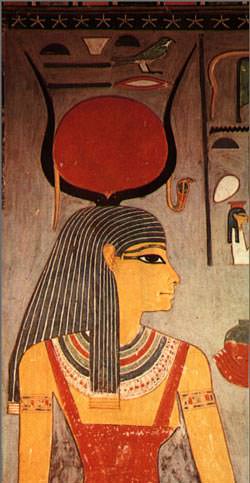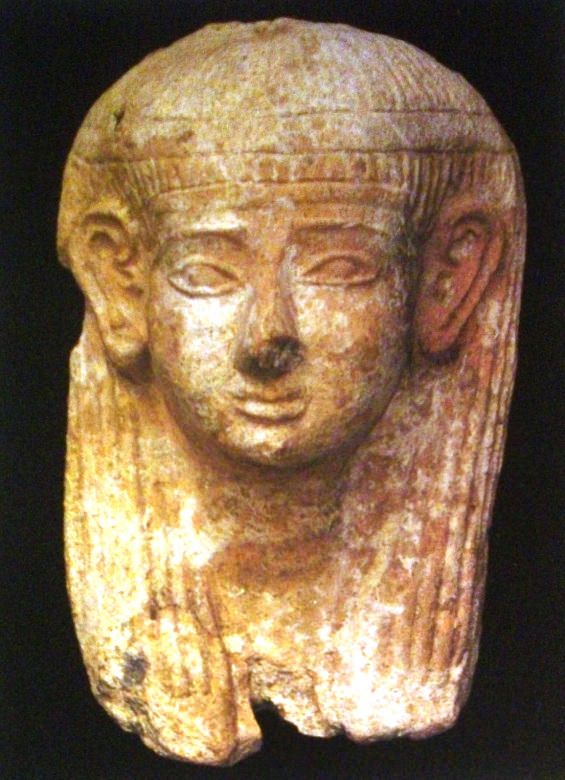Ceramic protome
Clay masks and heads were found in the necropolis of Sulky; these were either placed in the tomb or were votive objects laid in shrines including in the Tophets alongside the urns of cremated children.
The heads can be both male and female. The one in Sant'Antioco is female and represents a female face of a protective deity in Egyptian style (fig. 1).

The Sulky protome has a hairstyle reminiscent of Egyptian female deities (fig. 2) and is in all respects similar to the specimens found in Motya (figs. 3-4): the face is rounded with pronounced cheekbones and a round chin, a wide and strong nose, voluminous eyebrows, almost perfectly horizontal with the outside corner downwards, slanted eyes, small mouth and full lips.



Other protome, similar in all respects to the one in Sulcis, have also been found in Sardinia, in Tharros, and in Carthage (fig. 5).
The Sulcis protome can be dated to the late sixth century B.C.; the specimens from Motya are attributable to the late sixth century B.C. and were found in Tophets and not in cemeteries such as Sulky; a dating of between the seventh and sixth centuries B.C. has been proposed instead for the Carthaginian specimens. The main production centre of the Punic world is perhaps to be found in Carthage.
What was a protome like this one used for? It had an important protective and apotropaic value; it had the task of protecting the deceased in the tomb and during the journey of the soul to the afterlife.

Bibliografia
- A. CIASCA, Le protomi e le maschere,in AA. VV., I Fenici, Milano 1988.
- S. MOSCATI, Le officine di Sulcis, Roma 1988.
- C. G. PICARD, Sacra Punica. Étude sur le masques et rasoirs de Carthage = Kartago. Revue d’archéologie africaine 13, 1965-1966, pp. 1-116.
- A. TARAMELLI, Maschere fittili apotropaiche della necropoli punica di Tharros ed altra, pure apotropaica, dalla necropoli di S. Sperate = Atti dell'Accademia Nazionale dei Lincei. Notizie degli scavi di antichità, Roma 1918, pp. 145-150.

 VR
VR